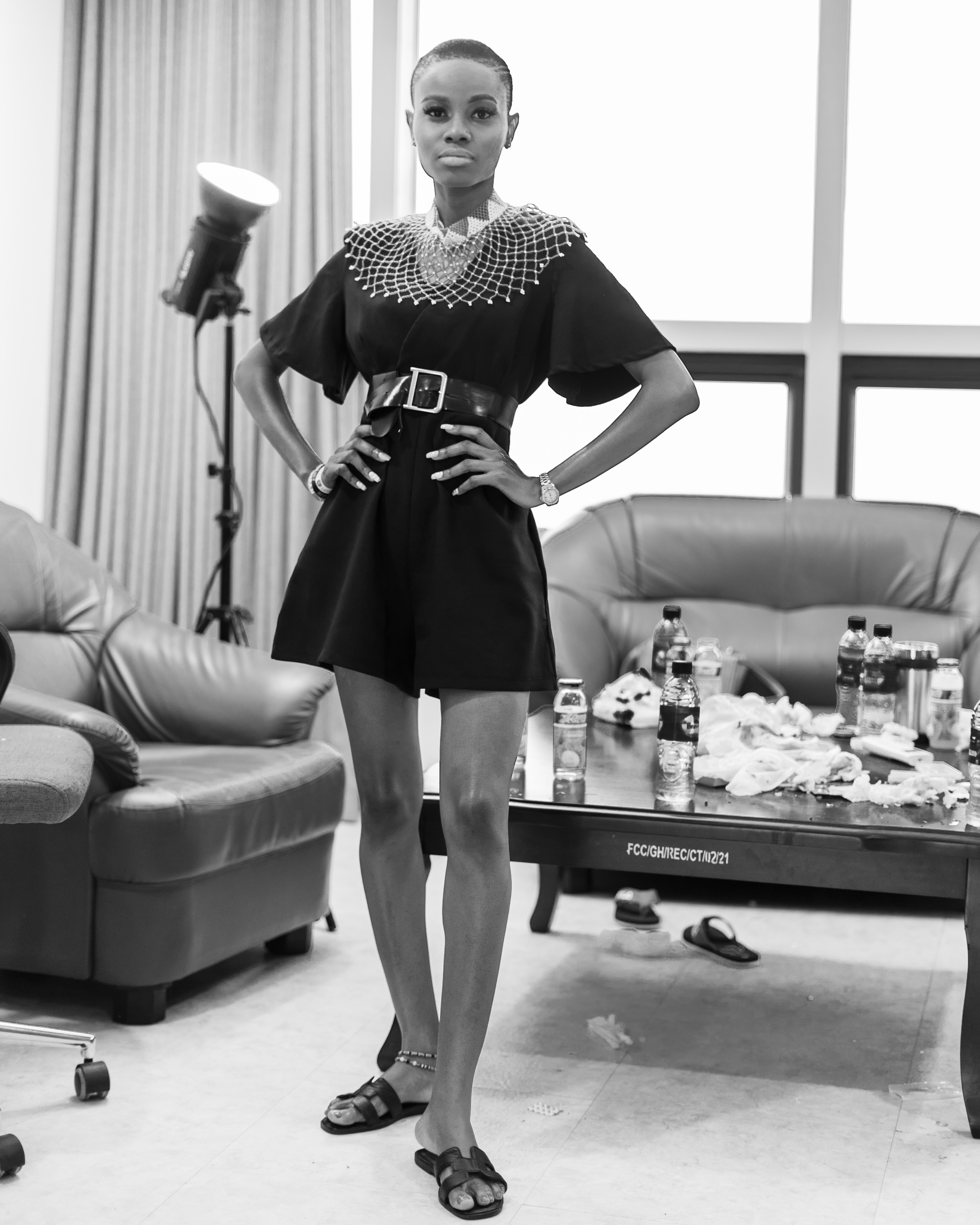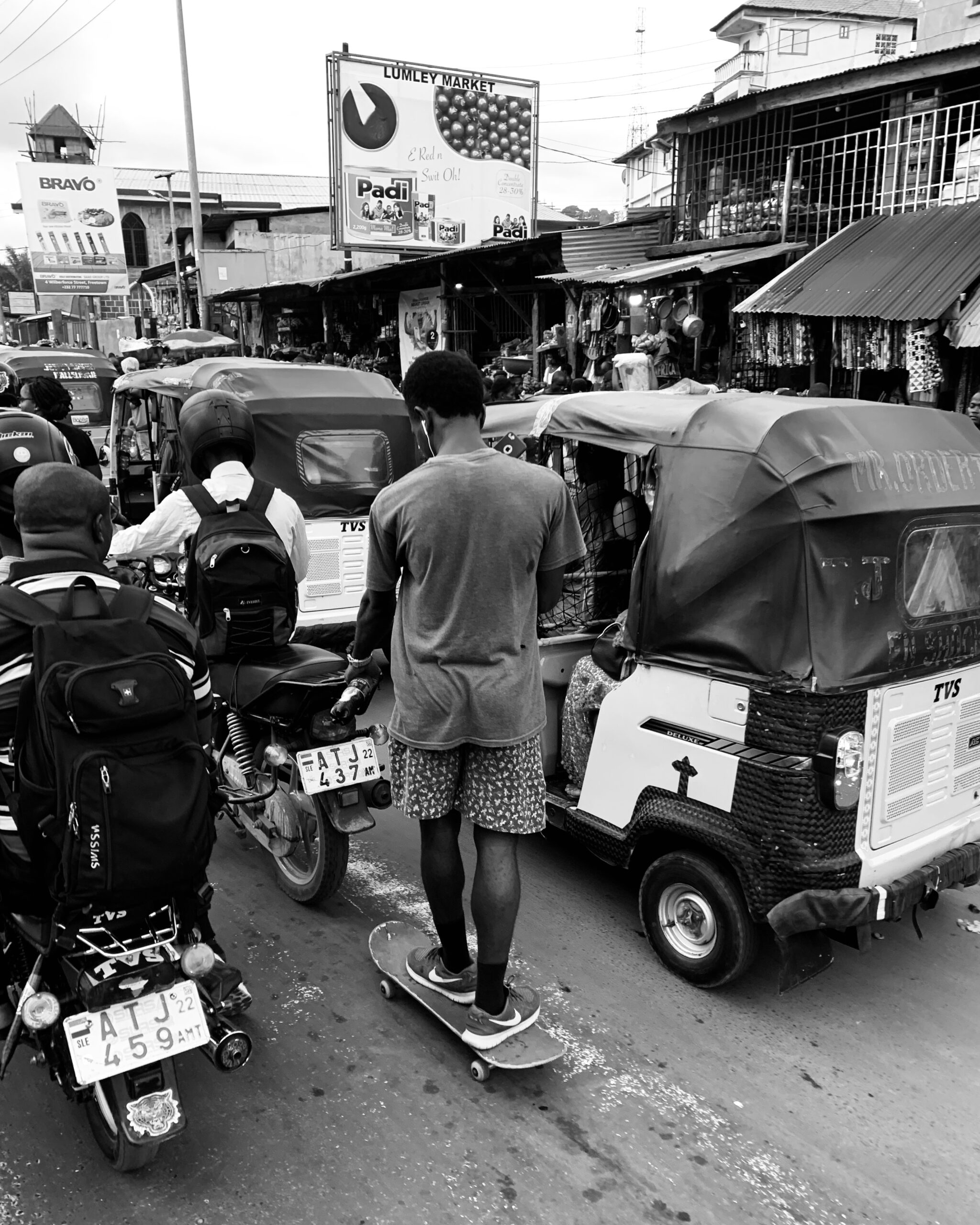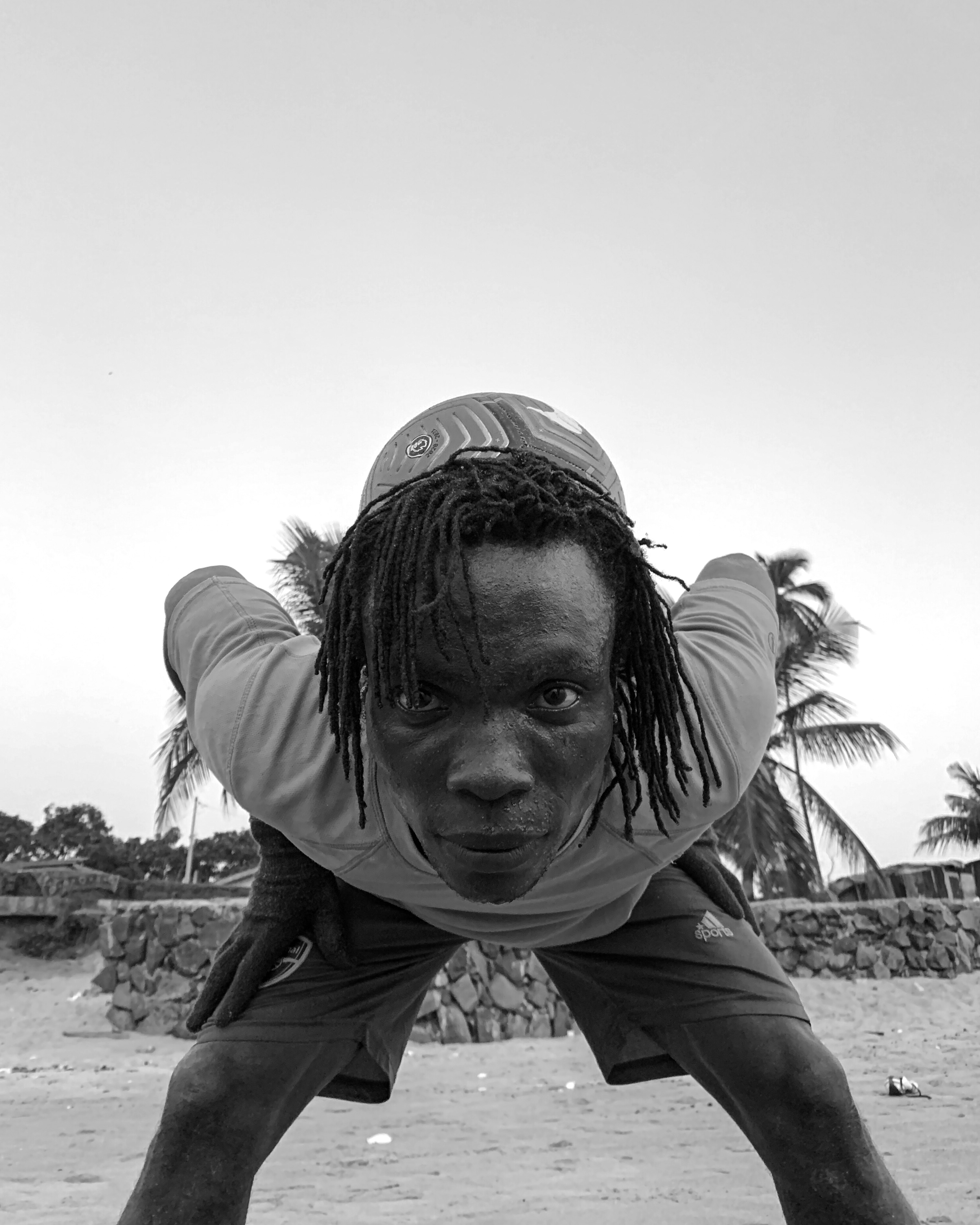Just like Lagos, harbour cities are necessarily frisky, on the stilts with caution due to crime and civil unrest. Like, that’s crazy, so why would anyone want to be on the streets of Sierra Leone, Freetown, and what are the risks for a photojournalist, or even a journalist? Even the global urban development trajectory marked by colonial legacies in Freetown makes it a shiny blinking red dot on the international no-travel zones, eleven years of civil war, the Ebola epidemic, the mudslide that occurred in 2017, annual flooding, the Covid-19 pandemic, just to name a few. But, everyone understands how tourism works, if an area is considered dangerous then foreigners want to see it for themselves, even if it is just to have a say in the topic of what is great about African cities, and what is not. Especially if the city is known for its topical climate and clean beaches that played some sort of historical role in the transatlantic slave trade, or to see the Cotton Tree an ancestor talked about, King’s Yard Gate, and argue pseudo freedom since Nova Scotian settlers found the Island of Sierra Leone. Despite everything, Freetown is still the commercial centre for trade in platinum, gold, diamonds, and oil, and to be honest, if Fourah Bay College is still considered the best Western-influenced college in Freetown, we don’t know, but we know some image makers like Abdul Hamid Kanu who is in “Pursuit of the beauty in the mundane” in a place considered a base for low lives. Most times journalists get the boot and the offence of incitement to suppress freedom of expression is used against them, but what are the risks for photojournalists? If you are a local, there are none, for the most part. In this journal project, Kanu takes us on a brief tour through Freetown using his explicit Black and White candid photographs of the streets as a medium of transport.


What are the safety levels in Freetown, as a street photographer, do you feel that you have a kind of access into the psyche of the city more than anyone else, enough to be “free” to make images like these?
Freetown is safe for street photography for the most part. Although, I try my best to remind myself not to feel entitled to people’s moments while out making photographs. I don’t always feel like I have access to the psyche of the city, especially in some places that might seem public but the people you meet there are private that is they won’t always tolerate the candid street photographs I make especially from a distance. I respect that and use it to my advantage. I move closer and start a conversation even if I have photographed before they notice me. This method is quite effective for me and what I love about it is, they will gladly tell you their story sometimes before you even ask. While there are others that willingly ask to be photographed while I’m out walking, I think they’re my favourite.

What are some of the troubles you have faced while documenting the streets of Freetown?
There was this one time at Lumley, a busy area I quite often document, a young lady was having her passport pictures made out in the open, someone holding a white cloth behind her and I thought it was a great moment. I pulled out my phone while I was walking past them and I made a photo. The lady noticed and a few steps later, I heard her shouting behind me. I stopped and the look on her face was terrifying. When she asked If I was making a picture of her, I panicked and denied it. Rookie mistake. A couple of steps later, the passport photographer got there and asked to inspect my phone. I was smart enough to delete the photos before he stopped me. There are a few alterations that have happened after but I handled them better than I did with this one.

What are the common languages people communicate in, and how many are you fluent in?
Krio is the most common language that is spoken in Freetown. I am fluent in Krio. Another has to be Temne which is also widely spoken in Freetown. Sometimes it is surprising to fellow Tembe people when they are informing others of my presence as a street photographer. I would respond or complement them in Temne and that is always an ice breaker.

In your opinion, what makes a photograph great, or maybe even a good one?
I still don’t have the correct answer to this question, to be honest. Although, there are certain elements one has to consider in order to make a photo interesting, composition, lighting etc. I do believe photos that tell a story or stir up emotions are what I want to make.

Sometimes it is hard to know the real reasons for a photographer’s work and, we were wondering, is there a message you are trying to pass across with your images of Freetown that the world is not yet in tune with?
Personally, I think my Images and the process of making them reminds me to be present in this fast-paced and sometimes mundane world. Before I got deep into street photography, I studied in Turkey for five years. While I was there, “nerelesin” (where are you from?) is a question I received from strangers more than the regular “Merhaba, Nasılsın?” (hello, how are you?). When I tell them I’m from Sierra Leone, they will jump to the conclusion that I am a refugee because their media is still painting pictures of a civil war in Sierra Leone. I would try to explain that the war has long ended, we are peaceful, and life and business are going on as usual. I would sometimes want to show them but the internet is saturated with pictures of what they already assume is happening. I always wanted to contribute to that change. Generally, I think people are interesting. How we go about our day-to-day activities is interestingly beautiful despite how mundane it might seem because we are used to these events.



Are there other photographers whose work you enjoy and draw inspiration from?
Yes, there are a lot of photographers whose work I love and admire each with their distinct style from documentary to portraiture. From the old days Gordon Parks, James Barnor, Vivian Maier, and others in our time like Steve Sweatpants, Andre Wagner, Salima Kamara, and Hickmatu Leigh to name but a few.



In the series of images, you shared with us, which is your favourite image, and can you quickly share the story behind it
It has to be the one of Mohamed or Medo as his friends called him. I was out doing a test shoot with a model in the Central Business district of Freetown which was empty because it was a Sunday. Medo and his rollerskating group told me they live nearby in a slum community. They occupied a whole street and were busy doing their thing until we caught their attention. They gladly accepted to join us and they stole the show or maybe I got carried away by their skating. We spoke briefly about school and skating. I look forward to continuing to document their community.

